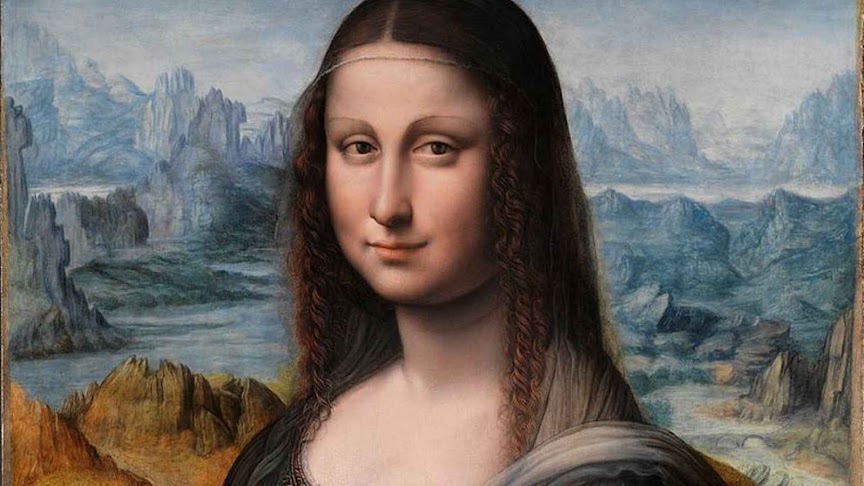This month the French unveiled one of their most ambitious “replica art” projects yet: a mock grotto filled by simulacra of prehistoric cave paintings from thousands of years ago. The 2500m² Cosquer installation, located a few kilometers away from Marseille, is slightly smaller than the original, but it includes recreations of all the paintings and most of the carvings created by artists using the same tools and charcoal that those ancient cavemen would have.
Horses, deer, bison, ibex, prehistoric auroch cows, saiga antelopes, seals, penguins, fish - and a cat and a bear - can be seen on the walls, just as in the real cave, including images never found before in prehistoric art. There are also hundreds of geometric signs and depictions of male and female body parts. In fact, the real Cosquer cave is among the four biggest cave art sites in the world, alongside Lascaux, Altamira in Spain and Chauvet, also in southern France.
However, there’s a problem. Although thousands of years ago, the cave would have been some ten kilometers inland, today the only access to it is via a tunnel 37 meters below the azure waters of the breathtaking Calanques inlet east of Marseille. Worse still, both the cave and its treasures are in danger. Every year the high water mark rises a few more millimeters, eating away a little more of the ancient paintings and carvings. Climate change, water and pollution are threatening to wash away the art of prehistoric men and women.
So although the cave was only discovered in 1985, the French government came up with the strategy - not of saving the real cave - but of creating a replica.
The project has cost an eye-watering €23 million and is offered as an alternative to trying to protect the original cave.
Diver Bertrand Chazaly (48), who is in charge of the operation to digitize the cave says proudly that:
"When it is finished, our virtual Cosquer cavern - which is accurate to within millimeters - will be indispensable for researchers and archaeologists who will not be able to physically get inside."
The Buffalo Post, however, has some niggling philosophical doubts about the whole idea: surely the whole point of preserving art is that it has to be “the real thing”? Otherwise, we could mock up simulacra anywhere and everywhere.
In fact, though, it seems that the French have a particularly liberal approach to preservation of art and buildings alike. For example, whereas in some countries ruined castles are barely prevented from collapsing, in France, as in Asian countries like China and Japan they are extensively rebuilt - and sometimes even given artistic “work-overs”.
Take one of France’s most popular tourist destinations, the historic walls and citadel of Carcassonne, for instance. The castle, in the beautiful region of Occitania, dates back to Gallic times and was at different points held by the Romans, the Visigoths, and the Arabs. No wonder it is UNESCO listed and one of the most visited tourist sites in the country. Yet in 2018 the local tourism board commissioned a Swiss artist, Felice Varini (then aged 64), to add bright yellow geometric circles or colored aluminum to the stone walls!
Okay, this was a temporary change - but controversy rages right now over plans to permanently rebuild the famous cathedral of Notre Dame in Paris by substituting Viollet-le-Duc’s historic glass-stained windows with contemporary and more colorful ones.
But perhaps the most dramatic example of a cultural icon not being quite what it seems to be, is the world's most famous work of art: Leonardo da Vinci's Mona Lisa, which hangs in pride of place in the Louvre in Paris. It is iconic, incredible, and unforgettable - but is it the real deal?
Today, “La Gioconda”, which is smaller than you might imagine, at 30 inches high by 20 inches wide (76 x 50cm) hangs in a climatized compartment that keeps its temperature steady at a cool 6° Celsius (43° Fahrenheit) and a perfect 50% humidity - as well as behind bullet-proof glass that is 4 centimeters (1½ inches) thick.
Today, “La Gioconda”, which is smaller than you might imagine, at 30 inches high by 20 inches wide (76 x 50cm) hangs in a climatized compartment that keeps its temperature steady at a cool 6° Celsius (43° Fahrenheit) and a perfect 50% humidity - as well as behind bullet-proof glass that is 4 centimeters (1½ inches) thick.
However, back in 1912, someone carefully cut the picture out of the frame and disappeared off with it. But get this, the loss actually stimulated visits to the art gallery! For some two and a half years, tens of thousands of tourists who went to the Louvre would come simply to stare respectfully at the empty space where the Mona Lisa had been. Waves of tourists came to see… literally nothing.
And then - almost miraculously - the painting was recovered. Or that’s the official claim. However, another strange thing about the world’s most valuable painting is that it is known that there are several almost identical versions of it done at roughly the same time. Louvre officials admit the existence of an identical copy of the Mona Lisa dating from the 16th century. The Pardo gallery holds another identical one, called “Mona Lisa’s twin”, pictured above. And over in England, the Isleworth Mona Lisa seems again to have been painted around the same time and by the same hands. It is almost arbitrary to say which Mona Lisa is the real one. The fact is, there is no way to decide whether the painting now in the Louvre is the original or one of the copies!
It’s a tough question - but there’s another that is even tougher: if there’s no visible difference, why would it matter?
By our Arts & Culture office in Domfront…
Tags:
Deep Dive



